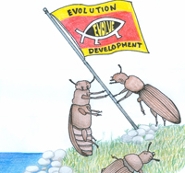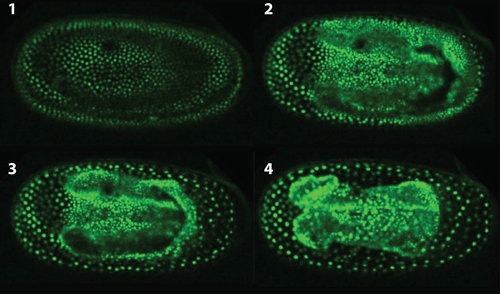How insects conquered land
IBL-researchers revealed in a new study that insects are successful on land because their eggs became protected against desiccation. An extraembryonic membrane in the egg, the serosa, helped insects to make the transition from water to land.

‘The serosa is a membrane which is made by the egg itself. The serosa conserves the water in the egg’, explains IBL-PhD student Chris Jacobs, who is first author of the publication in the Proceedings of the Royoal Society B. ’We first show that the serosa is unique to insect eggs. The ancestors of insects, Crustaceans like for example lobsters, do not have such a protective layer. They live in the ocean. Insects however, made the transition to land. To be truly independent of water, not only the adults but also the eggs need to be protected against desiccation. The evolution of the serosa facilitated their ability to develop in dry habitats.
RNAi
To experimentally test the function of the serosa, the researchers used the flour beetle as a model. The fruit fly cannot be used for this purpose because they lost the serosa. The flour beetle, however, does develop a serosa like all other insects. To prevent the development of the serosa in the flour beetle, the researchers used the molecular technique RNA interference, with which the researchers can prevent the expression of specific genes. The serosa cannot be removed in another way because this membrane is located below the eggshell made by the mother. RNAi made it possible to prevent the development of the serosa while keeping the eggshell intact. The researchers found that eggs without a serosa were sensitive to desiccation.

Vertebrates
‘The story resembles what has happened in vertebrate animals’, adds the principle investigator and VENI-laureate Maurijn van der Zee. ‘Fish, the first vertebrates, lived in the sea. Amphibians do have legs and lungs, but still have to deposit their eggs in water. In that respect they are no true land animals. The evolution of the amniotic egg, an egg like reptiles and birds have, truly made them independent of water. So it was also an adaptation of the egg that made insects so successful on land.’
Link
- Paper in Proceedings of the Royal Society
